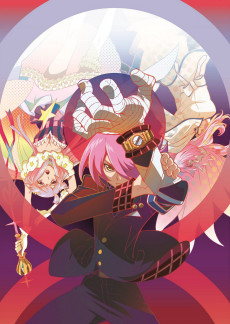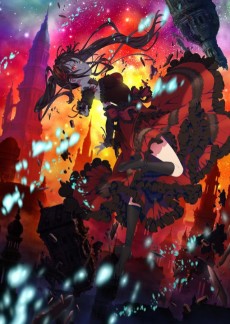RE:CREATORS
STATUS
COMPLETE
EPISODES
22
RELEASE
September 16, 2017
LENGTH
24 min
DESCRIPTION
People have created many stories. Joy, sadness, anger, deep emotion. Stories stir up emotion and captivate. However, those emotions are nothing more than the feelings of a spectator. What if the characters in the stories had their own "will"? In their eyes, are we, the creators of the stories, like gods? Revolution for our world. Punishment for the land of the gods.
Re:CREATORS. Everyone becomes a Creator.
(Source: Amazon)
CAST
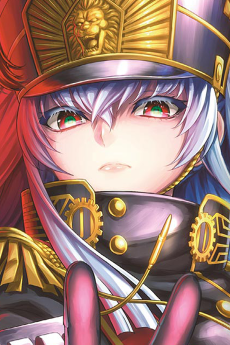
Altair
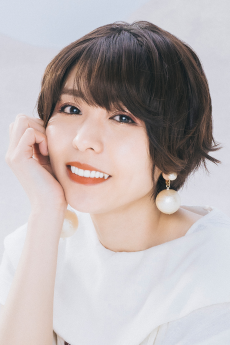
Aki Toyosaki
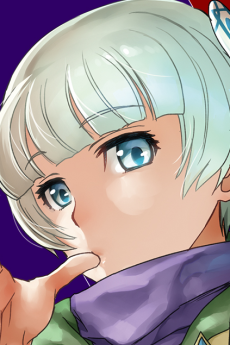
Meteora Österreich

Inori Minase

Selesia Upitiria
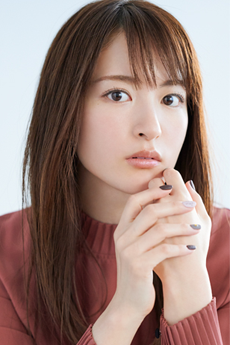
Mikako Komatsu
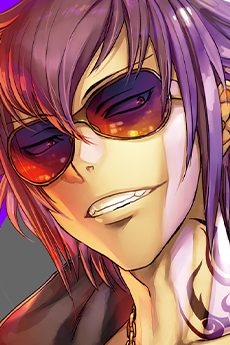
Yuuya Mirokuji
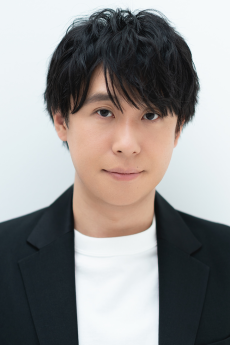
Kenichi Suzumura
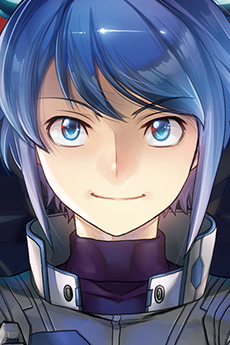
Rui Kanoya
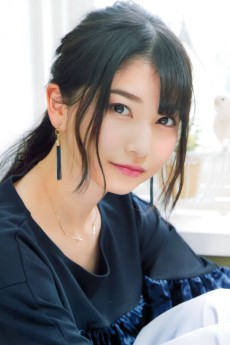
Sora Amamiya
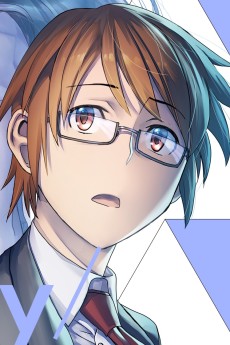
Souta Mizushino
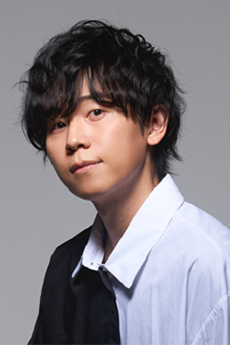
Daiki Yamashita
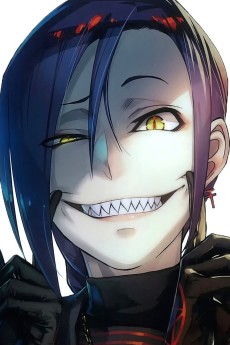
Magane Chikujouin
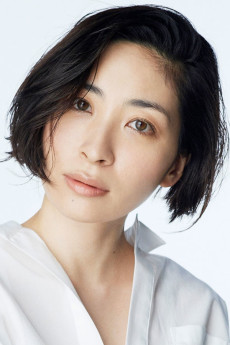
Maaya Sakamoto
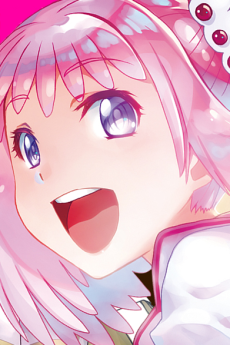
Mamika Kirameki
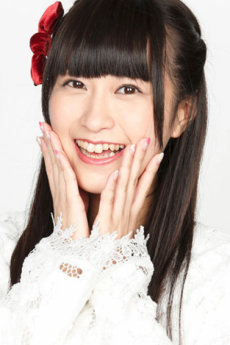
Rie Murakawa
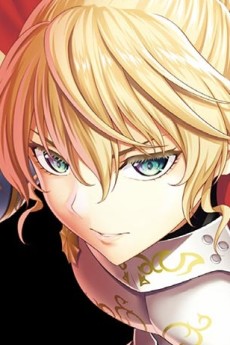
Alicetaria February
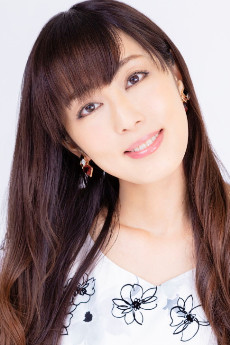
Youko Hikasa
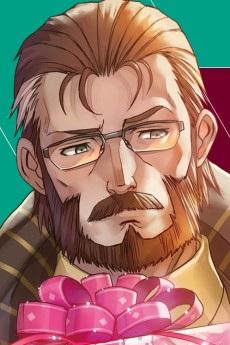
Blitz Talker

Atsushi Ono
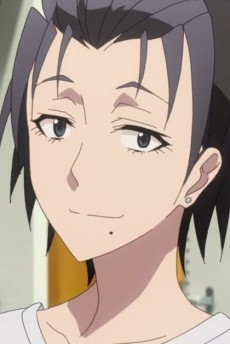
Shunma Suruga
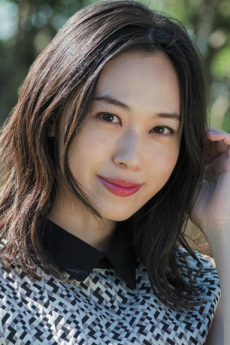
Minako Kotobuki
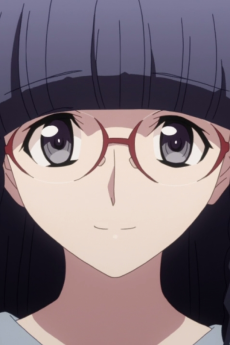
Setsuna Shimazaki

Ayaka Oohashi
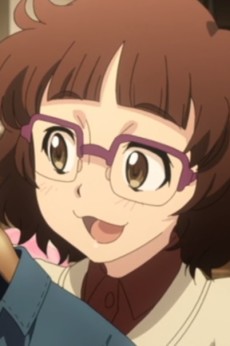
Marine
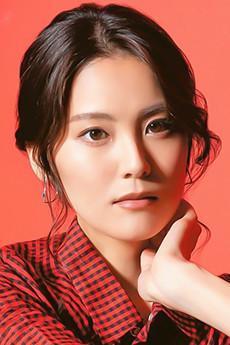
Hisako Kanemoto
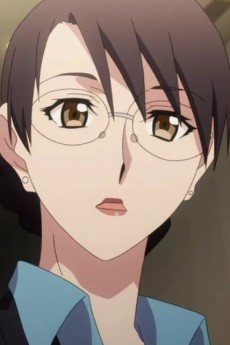
Aki Kikuchihara
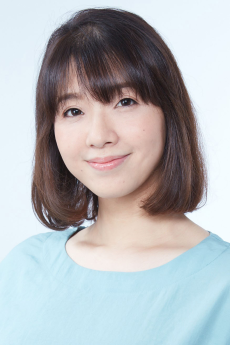
Ayumi Tsunematsu
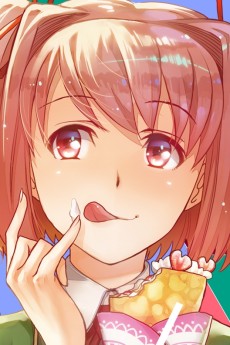
Hikayu Hoshikawa
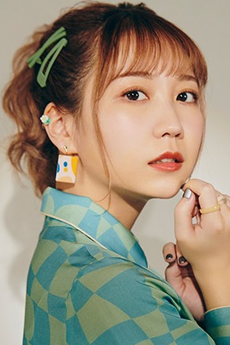
Shiina Natsukawa
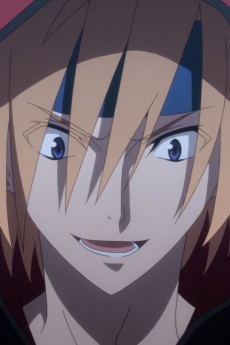
Shou Hakua
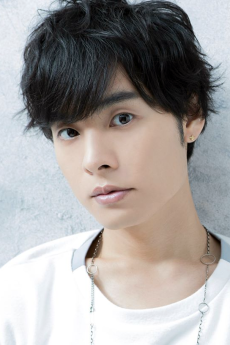
Nobuhiko Okamoto
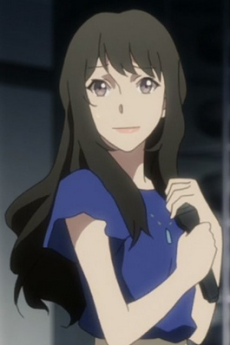
Sora Amamiya

Sora Amamiya
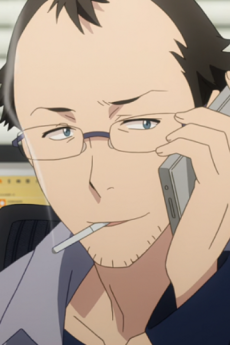
Takashi Matsubara
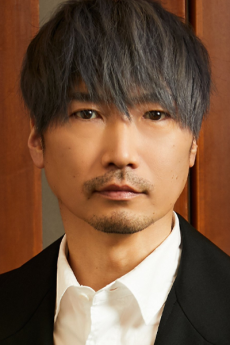
Katsuyuki Konishi
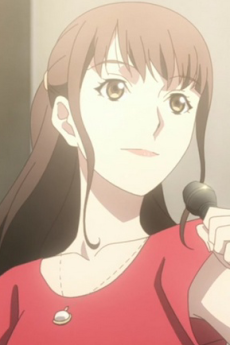
Mikako Komatsu

Mikako Komatsu
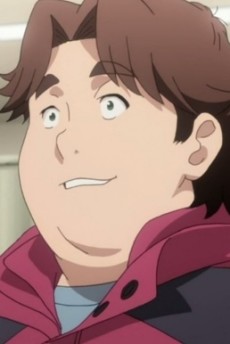
Masaaki Nakanogane

Ryou Sugisaki
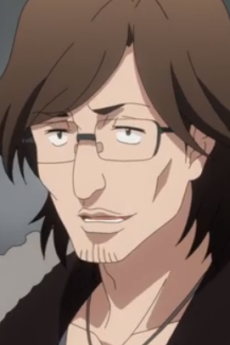
Ryou Yatouji
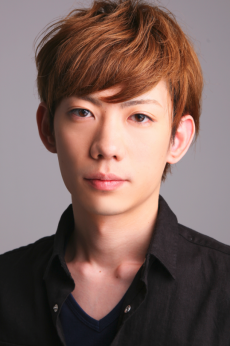
Daiki Hamano
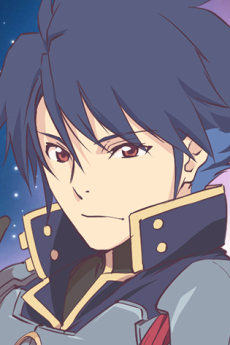
Charon Seiga
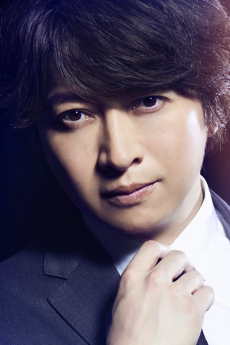
Daisuke Ono
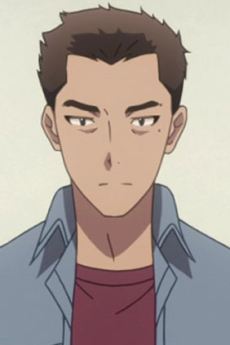
Gai Takarada
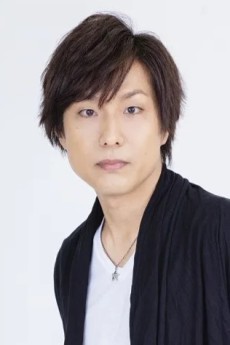
Junichi Yanagita
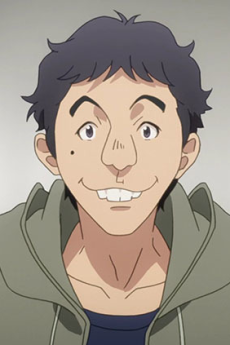
Nishio Oonishi
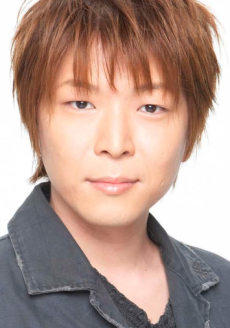
Jun Fukushima
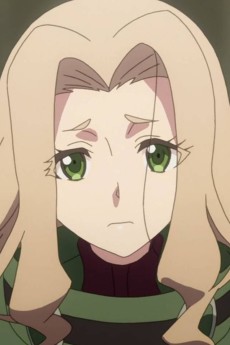
Erina Talker
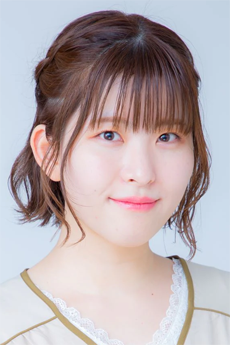
Manaka Iwami
EPISODES
Dubbed
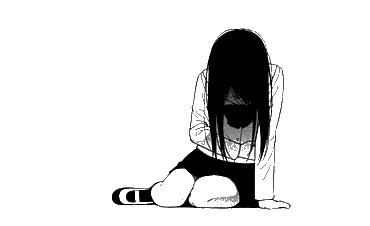
Not available on crunchyroll
RELATED TO RE:CREATORS
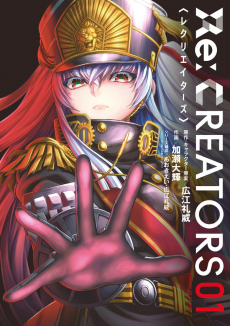 MANGA ActionRe:CREATORS
MANGA ActionRe:CREATORSREVIEWS

planetJane
83/100A story about the power of creation and likely future cult classic.Continue on AniListThe following assumes familiarity with the reviewed material. Spoilers below.
"I don't need magic to create. All you need is passion and practice. Fate will decide the rest."
--Meteora Österreich, Re:Creators Episode 22
Explicit metafiction is fairly rare within the anime medium (and only marginally more common in manga). For how much of anime, good and bad, relies on recalling older formulas and character archetypes and bringing them into the present, this is somewhat surprising. What then to make of Re:Creators, an unashamedly meta anime with a fairly impressive pedigree that had supporters calling it a classic in the making and detractors decrying it as pretentious schlock right from the very beginning of its run?
Let's start with the facts: Re:Creators is an action anime about fictional characters (sourced from also-fictional light novels, anime, manga, and video games) come to life. Our nominal protagonist is geeky shut-in Souta Mizushino, joined at first by Celestia, who hails from an anime that seems like a modern take on The Vision of Escaflowne, and Meteora, a mage from a JRPG who serves as an expository character both in her doubly-fictional game and within the show itself. This cast balloons significantly over the course of the show's 24-episode run, to the point that listing every character--both "Creation"--the show's term for these refugees from fictionland--and "Creator", the, well, creators thereof--is an exercise in pointless listmaking.
But let's back up for a moment, what about Altair, RC's main antagonist and also in a very loose sense, its actual "hero"? Altair's character arc is to put it mildly, very unusual, and her design is among the most brilliant in the past decade of the medium. Altair is a white haired girl clad in a bizarre amalgam of different 19th century military uniform styles. She has a shako cap, a Spanish cavalry coat that tapers into a wide skirt, strange high-heeled spur boots, and her eyes are double-set (a ring of red around blue), and her pupils are square. For the first half of the show's run I wasn't entirely convinced that this design being as ridiculous as it was (and it is ridiculous) was intentional or not, but over time it becomes clear that it's a definite deliberate decision.
A lot happens throughout Re:Creators, but one of several main story through-lines is about Altair herself and how she came to be. This is, by far, the show's strongest narrative thread, and is the one best carried to conclusion. But there are of course others. There is Celestia and Meteora coming to terms with being fictional, there is Magane, the gleefully wicked light novel antagonist who continually throws a wrench into the plans of both the pro- and antagonists, there's Mamika, the idealistic magical girl who gives her life for those same ideals at the end of the show's first quarter. There is the ridiculously-named Aliceteria February whose knuckleheadedness make her an antagonist for the show's entire first half, and there's the also ridiculously named Blitz Talker, a cyberpunk deuteroganist hellbent on avenging his daughter's death by killing his creator. All of these are handled better or worse. Mamika's death at Altair's hands is incredibly well-done (and, maybe unintentionally, a sneaky meta-comment on the state of the mahou shoujo genre post-Madoka), and Blitz' makes up for a slow start with a fantastic conclusion near the show's end. Celestia's is not quite resolved as well, her death at the show's end being underdeveloped and sudden, and Magane's is not really resolved at all. Other characters--like Yuya, Rui, and the second cour introductions Hikayu and Syo--don't really have character arcs in the first place, and serve more secondary roles. This is without even getting into the creators themselves who form an entire secondary cast. Nonetheless, no parts are played poorly in Re:Creators, save perhaps that of Hikayu's creator, an obnoxious bucktoothed otaku whose inclusion does ultimately pay off but remains questionable.
Altair is eventually revealed to be a doujin character, created by Souta's deceased friend Setsuna, which puts her design into a very specific--and very interesting--context. Her overdesigned-ness is the product of deliberately trying to create a character that breaks the rules of what a "good character design" should look like. She's a doujin character designed by a teenage nerd, so of course she wears a ridiculous outfit, of course she's unflappably cool but that actually hides a deep reservoir of inner rage, of course her weapon is a ring of sabers and a Russian machine gun she plays like a violin that can effectively do almost anything. These are the traits of OC's. "Mary Sues" to use an old piece of internet terminology that has largely fallen out of favor. Altair is overpowered, evil, and always in control. That her design works in references to Black Rock Shooter (her general color scheme is BRS' own inverted, white hair with red highlights in contrast to BRS' black hair with blue) and Akame ga Kill (her outfit's general fascist-evoking but nonspecific look) just seals the deal. Altair is a DeviantArt drawing come to life, and that is ultimately a really interesting character concept, and it's explored quite well in her arc.
Altair's motives aren't entirely clear until she kills Mamika, who she furiously lashes out at for presuming to be able to help her. Her lines in this scene (especially "I will destroy everything. Destroy, destroy, and destroy more until this world disappears. That is the reason I'm standing here today.") would be downright comedic if they weren't delivered with such utter disgust, and the subsequent howl of rage as she impales Mamika makes one pity her voice actor, and really sells her total burn-it-all nihilism.
Her arc takes a bit of a strange half-turn in the show's second half. As she fights the other creations (who, barring the shows-up-just-to-die Charon, have all united against her at this point) during the Chamber Festival she seems increasingly more bemused than anything else. Again, this is what an "invincible" character of her type is supposed to do. Almost nothing the protagonists throw at her offers her a genuine challenge, not even her own counterpart, Sirius, introduced late in the show as a last ditch effort. The final few episodes really are about Altair more than anyone else, and while they do often boil down to essentially shonen fight scenes with the usual form of fighting spirit-babble replaced here with technobabble about audience acceptance levels, it's a real joy to actually watch. But where things get truly strange is in episodes 20 and 21, the end of the former re-introducing Setsuna (in the form of a creation herself, albeit), and it's only here, at the show's very end, that Altair starts displaying emotions other than rage and smugness.
It's a long, long buildup to that, and understandably it's not for everyone. Episode 21 in particular, wherein Altair essentially surrenders now that she's reunited with Setsuna (and in doing so, crosses the Creation/Creator boundary, conjuring an entire world of her own making), is thick with a very deliberately sappy sort of character development. Altair arguably gets the happiest ending of any character in fact, with most of the others leaving the real world to return to their own or having died before that point. So what the finale ends up ultimately being about is, how well can you "sell" a happy ending for a character that by conventional standards, doesn't really deserve one? And the answer is that, well, it depends. If you found Altair annoying at the start of the series the ending is not likely to redeem her for you, since on a literal level she more or less gets away with everything.
On the other hand, if we take Hikayu's comment about Altair being "the real hero" into account, we're left with an interesting view of things. That Altair did not act in a moral right by any conventional standard is indisputable, but, who--both in-universe and out--ended up being the target of the most discussion (good and bad), fan art, and so on? Altair's character arc working (or not) hinges almost entirely on how believable you find the idea that, in order, the in-universe audience reflects the preferences of the out of universe audience, and that that preference--Altair as the most interesting and therefore "main" character--is valid. It's an interesting narrative trick and one I might go so far as to say is entirely unique. Certainly, it is nothing I have seen pulled off so well before. Altair's "redemption" (if it can even be called that) works because the audience wants her to be redeemed. Heroes dying to help save the world after all, is nothing unexpected. Villains voluntarily stopping themselves after a good talking to--even under extraordinary circumstances--is much rarer. For a certain kind of person it is certainly a hard pill to swallow, for another--and I fit myself into this camp--this particular piece of narrative origami is so fascinating that I can't possibly fault it for not being a simpler happy ending. Altair's arc is such a strange rollercoaster ride that it does make me wonder if the character's dark horse popularity wasn't planned for from the start.
This isn't to say of course that at the end of the day Re:Creators has no flaws. Indeed it has quite a few. For one thing there are, funnily enough, simply too many characters. The cast could be trimmed by a third, the script rewritten, and no one would notice. Several exist mostly as background fodder or only to facilitate dumb jokes. For another there are also too many episodes, around the halfway point the show enters a serious slump with a trio of episodes that focus primarily on the minutiae of setting up the Elimination Chamber Festival. This is, in a word, boring. The various creators are perhaps unsurprisingly the least interesting characters in the show, and their interactions with each other bring little to the table. Matsubara's awkward father/daughter conversations with Celestia earlier in the series, and Suruga outwitting her own creation Blitz later on, are much more compelling because they involve a creation character too. On their own, the creators don't do much of interest and this section drags the entire show down considerably (that it immediately follows an admittedly funny recap episode doesn't help).
In addition, while Altair getting a happy ending is not itself a point of contention for me at least, the fact that two other characters die in the last few episodes is a little disappointing. Late-in-show character death is of course a tried and true trope, but it is exactly the sort of thing that RC should have strove to avoid. Celestia and Aliceteria both biting it in the leadup to the finale does compromise Altair's own redemption, since the deaths are fresh in our memories by the time we get to that point. Finally there's the issue of Megane, who is herself a very interesting character, but, after she tentatively flips to the protagonists' side in the show's final quarter, she more or less up and disappears, leaving her character hang in the air unresolved. It's a strange decision especially given how much closure we're given with Altair, and while it does fit her personality to an extent, the fact that we're given not even a small hint about where she might've gone or what she might be doing after the main story is over is undeniably frustrating.
But none of these caveats even come close to ruining the show. Perhaps in another world, where it does not have them, Re:Creators might well have been the classic that youtube channel Mother's Basement famously prognosticated it might become. With them, it is more of a future cult classic, a key point of difference. Really, one gets the impression that Re:Creators' own creators are the sorts who would prefer to make a cult classic than something with unanimous critical acclaim anyway, so perhaps it's all for the best.
One last thing. The show's 22nd episode--its last--is the sort of bow-on-the-giftbox affair I wish more anime could learn to do. Most of the characters return to their own worlds, returning much of the setting to the status quo, but Meteora, notably, does not. Of course, in a show this shamelessly self-indulgent it is perhaps no surprise that she becomes a novelist, and ends up writing a book called--what else?--Re:Creators.
What you end up with at the end of the day is an anime about the creative process itself, and while Re:Creators is far from perfect, the fact that it even tries to broach this subject, with a mix of seriousness and humor, makes it an easy recommendation for anyone who won't mind the bumpy ride. You really don't see too many like this one.

Goukeban
99/100A delightful work about our relationship with fiction and art, disguised under the veil of an action anime.Continue on AniListI believe I mentioned this before, but I find it consistently harder to write in praise of an anime than to bash it, to the point that the only manner in which I could be satisfied on doing so, would be to break down each episode while highlighting why I believe certain scenes or bits of dialogue are so great and important to the big picture. As you can imagine, the highest I value something, the harder it feels to explain, so let it be known right from the start: I do see Re:Creators in VERY high regard!
Story and Characters
To begin to understand why the show works so well, the first good hint would be the original writer, Rei Hiroe, who wrote the story that led to the anime. For those unfortunate enough to not know who Hiroe is, he’s the author of the Black Lagoon manga and the responsible for the dynamic between Rock and Revy, two of the finest characters crafted in the media. In Black Lagoon, he demonstrated his strength at crafting witty and meaningful character studies, while in Re:C he displays, with some aid from Ei Aoki (director of Fate/Zero), his efficiency at developing cohesive, effective and strong plot.
Some comparisons I’ve seen be made about the nature of Re:C in regards to other anime vary from a knock-off of Fate/Zero’s concept, for those who see the combination of colorful fighters of multiple origins as somehow related to F/Z and nothing else, to a shallow piece of propaganda fellating the Japanese government and military, in the same fashion as GATE, for people who are too obtuse to notice the obvious differences and like to make asinine comparisons (you know who you are!). The closest I’ve seen to actually hit the mark was to Melancholy of Haruhi Suzumiya, since both works are commentaries on the media they’re a part of. This comparison doesn’t adequately prepare you to get into Re:C, but it is a better assessment of the nature of the show. While Haruhi is purely a dissection (or you might even say a “deconstruction”, if you can believe it) of the tropes that are to this day prevalent in anime, that made itself brilliant by twisting the role of the protagonist and titular character, along with the ones that personify those tropes, Re:C is a commentary on our relationship with fiction, both from the perspective of the creators as well as the audience, and it makes itself brilliant by making what would be natural parts of that relation into integral, tangible elements of the plot. I’ll discuss the perspective a bit more when we get to the characters, but for now let’s talk about the strength of the narrative
img220(https://i.imgur.com/E1nIeGB.jpg) Manage your expectations
Manage your expectationsBesides characters, which I consider to be the most important thing in a story, something I also find of great importance when analyzing is how well structured is the narrative. That takes into consideration things like pacing, as in the rate in which the story progresses or new information is introduced, the role different characters play and how meaningful they are on that role and, specially, when things happen for a reason. Re:Creators shines in that regard, among other reasons, because it wastes almost no time. Every episode in this show is there for a reason (yes, even the hot-spring episode) and nearly EVERY scene has something to help bring out new information, develop the numerous figures of the cast or reinforce what is already known, character and narrative-wise, through a new method or situation. Want an example? The events of episodes 9 and 10, for once, might seem to have no effect in the rest of the plot, at first glance, but looking closely you might notice that they made for the perfect set-up for the main characters to confirm a plot point that would prove itself vital for their future plans, as well as kick into motion Aliceteria’s character-arc. Take this episode out of the equation and you’ll have that plan turn into a complete ass-pull and have Aliceteria’s change of heart be completely unwarranted.
If you are reading this review, I’d assume you already know the premise of Re:C, so I’ll not waste much time explaining it. So, a feeble mind would predict the main villains of a story with such premise to be those who were already villains in their original stories, but this is one of the instances where this anime subverts expectations in the best way: the real villain of the story is a character that originally had no purpose, while the one who was originally a villain turns into a wild card. The series tackles motivations and work ethics of the different artists, ranging from those who do that simply to make a living to those who see on the act of crafting a story as their way of expressing themselves in the way that is the most fulfilling. That said, let’s talk about the characters, starting with the main antagonist
Altair, or the Princess in Military Uniform, was an original character, created based on one of a preexisting fictional game called Eternal Wars Megalosphere and is noted from the beginning to be connected to Souta, one of the main characters, and Setsuna, a former friend of Souta who, and I don’t think I’m spoiling much about the first minute of the show, committed suicide a few months earlier. Do you want another example of how finelly crafted is the structure in this anime? Since not much is shown from Setsuna’s perspective prior to her suicide, some viewers might get frustrated at first, feeling that they missed on something important, but that turns out to be a necessary decision, given what we see from her on episode 21, in which her avatar plays a decisive role in the conclusion. This decision is a great factor into making the experience of this episode as meaningful and effective as it is, besides the excellent writing, of course. Altair was a character created without a set purpose, carrying only the emotions of her creator, to whom she feels a strong connection with. Therefore, she takes upon herself the task of avenging her creator, who she feels was wronged by the world. That lack of a reason to exist, coupled with the angst carried by the one she held the dearest led her to see the real world as a cruel story, and what better way to enact her revenge than by causing the world to implode on itself?
Mizushino Souta, a highschool-age student, is part of the main cast, but regards himself and is treated by the narrative more as a narrator-type figure. He’s an aspiring illustrator who’s a bit shy about his art and holds a guilt complex in regards to Setsuna’s death, who he believes to have betrayed. He considers himself partially culpable for her suicide, for not coming to her aid when it was needed, and that feeling of guilt is what motivates him to take action during the second half of the story. The conclusion to his is arc is not one of overcoming the guilt, but of learning to shoulder the pain of his mistake and making something positive out of it, through his creations. Episode 21 (seriously, folks, it’s a very important episode) is where that is displayed at full force and he ultimately comes to peace with Setsuna. Souta also provides insight about the perspective of people who enjoy and avidly consume fiction, like on his argument with Aliceteria, where he tells her how characters like her are loved because they motivate people with an ideal, a model of how to act, to be honest and never let themselves be brought down by hardship. He also comments later how the passion for anime, manga and other media gives the viewer the opportunity to see the world through someone else’s perspective
 I'm sure he wasn't expecting this plot-twist!
I'm sure he wasn't expecting this plot-twist!Starting the hoster of creations with the heroes, we have Selesia, a character from the light novel and anime series Elemental Symphony of Vogelchevalier, an Escaflowne looking, magitech inspired Mecha that I like imagining to be set in phantasy 1920s. In her world, she was the partner of the main male lead, Charon, fighting against the forces of the Avalon Brigade, which gave her a resolute, quick to action personality, but still calm when among friends. In an interaction with Souta, she advises him to take his time and not try to rush his artistic development, because that way he would be able to grow appropriately along with his work. That interaction reflects the experience she had fighting in her universe, experience that also makes for amusing banter between her and her creator, Takashi Matsubara. Initially, she complains to him about why he didn’t make her stronger, not understanding his perspective as the writer. Their relation eventually becomes mildly like father and daughter, and Matsubara comes to be protective of her, cherishing her as his creation. He comments, during a conversation, how writing is his way of telling the world that he has been there, of leaving a mark on other people. He comes off as an experienced writer, who understands what he can and cannot do in order to keep the audience invested on his work.
 HEY! That's not my best Girl!
HEY! That's not my best Girl!Next in the roster is Meteora, also known as Best Girl, originally a NPC from the RPG game AVALKEN of Reminisce, where she takes the role of a powerful mage and the responsible for the library at the End of the World, right before the final boss. This is a very important detail about her, because it influences the way Meteora relates to the real world and other creations, as well as fiction. She states early on that her world is deeply detailed and fleshed out, having even fiction of its own, therefore she has better appreciation and understanding than other creations have about art, its mechanics and the influence it has over people. Interestingly, in one of the early episodes, she and Selesia contemplate a graffiti, and while Selesia has an amazed look on her face, Meteora displays a colder, more analytical expression, denoting the difference in impact for both of them. Lacking social interaction but being remarkably intelligent, she doesn’t have an easy time expressing her emotions properly, which she tries to mitigate by pulling off horrible puns. We see more of that restrained playful soul in episode 13, the greatest recap episode in the history of anime. A nice, detail about her character is how initially her speech is notoriously long-winded, but over time it’s possible to notice it becoming less prolix and more personable. Her knowledge of fiction allows her to read effectively into other characters and she quickly learns to understand what goes through the heart and mind of people from the real world, making her the one to give Souta the emotional support he needs to come clean about his mistakes and deal with the guilt that torments him. She is definitely the one the boy feels to most confortable to talk to, and their friendly chemistry persists throughout the series.
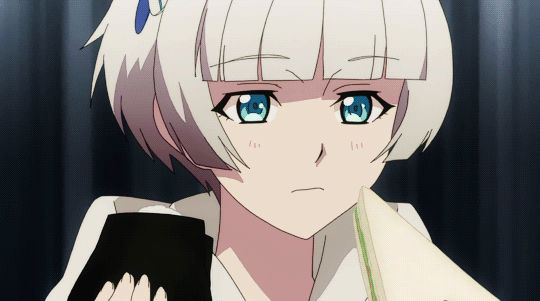
There! Much better!
Hell, I ship them!
Since she becomes the brain of the group, fact amusingly displayed when nobody knows what to do and quickly turn to look at her, Meteora also develops a professional friendship with Kikuchihara, the government official responsible for dealing with the situation of the fictional characters. Both recognize and grow to respect each other as the one from both groups who knows best how to deal with the situation
Mirokuji Yuuya is every anti-hero/rival voiced by Nobuhiko Okamoto: impetuous, self-reliant, prideful, hedonistic and occasionally clever. Funny enough, his rival from his original story, Sho, is himself voiced by Okamoto, which might be the most amazingly subtle reference ever. Both come from Yatoji Ryou’s manga Lockout Ward Underground: Dark Night, with Yuuya being laid-back and uninterested in doing what others tell him, hanging out with the heroes simply for the fun of fighting the villains, while Sho is obsessed with killing Yuuya, whom he believes to be his sister and best friend’s killer. Perhaps mirroring Yuuya’s personality, Yatoji is arrogant and a bit difficult to deal with, but softens up fast due to their dire situation. He and Matsubara worked together in the past and don’t go very well with each other, but it’s hinted that Matsubara appreciates Yatoji’s work and still worries about him being able to continue, as shown when Yuuya decides to beat up his own creator.
By now we had the light novel female warrior lead, the RPG kuudere, the adolescent power phantasy and fujoshi bait, it’s time for our Gundam boy. Yes, Kanoya is the “Gundam” representative; he went looking for some young poon-tang on his first week in the real world, so he cannot possibly be the Shinji look-alike. His author, Nakanogane-san, wrote him to be someone who gets easily defensive, but also quite heated-up in battle, but as soon as he comes to the real world, the kid decides he doesn’t want to fight anymore. What? Did you expect the Gundam kid to not have his “get in the robot” moment? Silly you!
Kanoya’s small but charming character arc involves him realizing that the obligations he shoulders in his original world are not arbitrary, but something that only he as the protagonist can fulfill, which gives the kid newfound sense of responsibility. His conversation with Souta in episode 11, while superficially seeming like just a fine motivational moment, also highlights an important part of creating effective stories: that characters need to have a purpose to guide their development and actions, creating a sound narrative. Nakanogane-san doesn’t have trouble finding his place, though. The creators here don’t just sit around while their characters fight to save the world: they take initiative on putting together the pieces of Altair’s past and goals to find the best course of action.
Lastly, there’s Hikayu, the visual novel heroin created by Nishio Ohnishi (har har!), who’s a pervert. A good-hearted one, don’t be too harsh on the guy, he means well. Since her game of origin was primarily an eroge, Hykayu is disheartened to learn how exposed she’s to the world, which makes for some of the best comedic moments on the show, like when she does her badass entry during the heat of the combat, shouts her passionate entry lines, while feverishly blushing in shame of her outfit. Surprisingly, or maybe not, her game is not exclusively made of fap material and contains emotional moments that she carries over to her experience in the real world. Could this be a tangential commentary about the tastes of the stereotypically perverted otaku, who can accept a story having blatant smut as well as heartstring-pulling narrative? Perhaps a jab at how we feel the need to justify liking questionable material with the argument that it has a serious and emotionally gripping story? Who knows, but it does add more substance and weight to the notion that the writers and staff do know the ins, outs and running trends of the media they are representing in the anime, instead of simply crafting half-assed references.

Gotta reveal more of that good plot.Chikujouin Magane (creator not important) is the one creation to have been a villain in her story, but like Yuuya, prefers to act by herself and have fun with people’s suffering. She takes quite the liking or the real world and for Souta’s emotional struggle, taking him and the creations as her main source of enjoyment for the first half of the show. She doesn’t seem to like Meteora very much, though, since the girl doesn’t fall easily for Magane’s mind tricks.
On Altair’s side, the first ones to appear are Aliceteria, the idealistic knight, and Mamika, the unlucky Magical Girl.
Mamika comes from a show for kids, where the morality is black & white, villains are recognizable at first glance, good people who don’t immediately side with the heroin just need to be beaten into agreement and violence is bloodless, so for her it’s a shock to learn that in this new reality her powers might inflict serious harm on people. Kind-hearted and naïve, she doesn’t so much change her nature as the series goes on, but instead learns about the complexities of the new world and takes different methods to bring end to conflict. Aliceteria, in the other hand, comes from an equally black & white reality, but one severely more violent, bloody and harsh than that of Mamika. Aliceteria is stubbornly idealistic, to a point where the anime makes it clear she fooled herself into believing the real world is really a home of sadistic, cynical gods, who created her reality just to amuse themselves with the suffering of the people in it, so it’s her duty to force her god, Takarada-san, to fix her world and free it from evil. Takarada himself looks like a young, emergent author who still hasn’t mastered the creation of layered and complex characters, relying on the archetypical noble hero to focus his work on. It’s partially through Souta’s intervention and passionate speech about why figures like Aliceteria are beloved on his world that she begins to realize how disconnected she is from the true motivations of her fans.
Mamika and Aliceteria form a strong bond in their short time together, despite the difference in mentality. For once, when going to recruit a new creation, Mamika hopes it’s a good person, while Alice hopes it’s someone trustworthy and strong (to their dismay it’s neither), and it’s the similarity in values, despite the difference in priority, coupled with the courage and backbone that warms the knight to the young magical girl.
These two characters, among others, help put into perspective one of the brilliant ideas applied on Re:Creators: the anime purposefully built one-dimensional characters into the narrative because in context they come from stories that aren’t as well fleshed out or detailed. Selesia and Meteora, were created by authors who intricately crafted their personalities, worldviews or universe, so when they come to the real world they act more human, but also can better understand the morality of their creators, while Mamika and Alice were shallow characters, created to be good and righteous, but lacking understanding of complex notions of right and wrong, so they become easy prey for a villain who can spout ideas that sound good and presents easy solutions to their problem. That shallowness is not the final state for them either, but a jumping point from where they develop into layered and intelligent individuals capable of understanding the new reality and taking the best decisions based on their own morals.
Lastly, because going further would be spoiler, there’s Blitz Talker, the hard-boiled supporting character from the manga Code-Babylon, written and drawn by Suruga Shunma. Blitz clearly knows of Altair’s true intentions from the beginning, but stays with her because of his desire to protect her, whom he sees as weaker than she lets transpire. Suruga is an intriguing character because she keeps a low profile most of the time, not showing much of her personality and mindset. Most of the time she comes off as an aloof workaholic, constantly drawing, barely taking her eyes off the paper, only to look woefully uninterested when she did, but in her confrontation with her Blitz, she delivers plenty of substance. She makes for a great parallel to Setsuna. The girl had a sudden boost in notoriety, but didn’t have the time to grow up and learn to deal with the hate that comes with the spotlight and that negativity was too much for her young mind to deal with. Suruga, on the other hand, had to struggle with competition and criticism, suffered with the negativity, finally reaching enough success to be able to sustain herself with her art. Many viewers might think her outlook on fiction or her creative process is cynical, but it’s better to describe it as pragmatic and she shows to genuinely love and take pride on her work.

As you can see, a writers work can be pretty hazardous!On episode 03 the anime introduces the concept around which the entire plot revolves: audience acceptance. They first note that the characters to appear in the real world tend to be those who had the largest impact among the public, so after Matsubara fails to alter the description of Selesia, it becomes obvious that the creators can’t simply change their characters as they go along. They soon began to theorize that what can really affect their status is if they manage to get enough of the general public to empathize with the changes made to them, idea that is solidly proven in the events of episode 10. It’s based on that concept that the heroes elaborate their plan to defeat Altair, by crafting a story that would be able to gather acceptance from the public to the point where they are able to bait and trap Altair on the Bird Cage, a scenario located within the real and fictional words, where they’d be able to defeat her for good, with the approval of the public. Fun fact: Bird Cage is a reference to Altair’s name coming from the Arab word for bird.
Looking at the contextual level it’s not hard to see that the idea of acceptance is a method of commenting on the common fictional elements that have the most success with the public on our own universe, as well as the difficulties faced by writers of popular works, who need to keep constantly in mind what the audience wants from them. Fiction is manipulation by nature, it’s designed to engage the audience in an illusion where the artist pulls the necessary strings to make us feel or think a certain way in relation to what happens to the characters. Bad fiction happens when the illusion is not convincing enough or when the trick is so poorly conveyed that we can see the strings in the background, and no character in Re:C exposes that better than Altair herself in the last few episodes. Not only are her powers the ability to manipulate the fabric of fiction (reason why she can’t simply nuke the world into oblivion), but her speech is constantly centered on the idea of what exactly pleases the audience and gets their acceptance. Her originally neutral condition also contributes to that concept: Altair is a character without cannon beyond the original powers given to her by her creator, so there’s little restraint for other artists to invent new abilities for her, as those new powers can just as easily get approval from the wider audience, contributing to her continuous growth in power and number of tricks up her sleeve. Part of me wonders if this is not a paradoxical trick the writer crafts with the audience. As the viewer, we are conditioned to expect the main villain to not go down until the very last moment, and only against a worthy hero that can pull off the strongest emotional reaction from the audience, therefore, the writers are fooling us into expecting Altair to pull off something new to aid her in battle, knowing that the nature of her powers allows for that.
Presentation
Across the multitude of designs presented the anime displays excellence in keeping verisimilitude and coherence. In fact, that might be the most valuable quality of the work’s presentation, beyond the technical aspects, which are not shabby by any means: the directing is excellent, packed with clever transitions and enthralling shot composition (special shout out to that one camera movement in episode 06 that tells us with no effort that Magane just gets it).
Every element of character design was conceived in a way that the experienced anime fan could safely note what they make reference to: Selesia and Charon dress in the angular and colorful style that has become a trend among light novel characters, clearly made to please cosplayers instead of having practical combat utility; Meteora sports the distinguishable attire of an RPG mage from works like the Tales franchise, cuz the design is clearly too confortable to be Final Fantasy; Kanoya uses the slick, futuristic uniform of robot pilots across the Mecha genre. All of this is important because it says something about the characters, not only from what kind of story they come from, but also their personalities. Even when in civilian outfits, the choice of clothing tells something about them: Meteora dresses with cute and childlike attire, because she’s a petit woman and is tired of constantly using a thick uniform, while Selesia’s adorably modest choices help flesh out her personality as reserved, possibly chaste.
The same care extends to all the fictional websites, products that appear on the show as well as the different magic symbols used by the characters. The designers commented in interviews how there was an entire creative process behind the elaboration of the multiple logos, focused on creating an internally consistent scenario. There’s no “Gaagle” search engine or “PZP” console in this story, all the fictional products, social medias or websites presented here were designed to look and sound believable to the extent that one could easily think that Mauchly, Piclive or Songbird are a real thing, or that SONY might actually create a console called Play Portal, which I imagine would be a portable with meager first and third-party support.

This is the kind of attention to detail you see in a work with passion put into it.The sound department continues the effort in verisimilitude by featuring performances consistent with the universe and genre each character comes from. I’ve already mentioned Nobuhiko Okamoto previously, brilliantly cast as Sho, not just because of the irony but also because he’s can skillfully express Sho’s devoted and naïve mannerisms. Other clever choices are Suzumura Kenichi as Yuuya, fitting since this voice actor has experience with characters who speak in mischievous tone, and Minase Inoue, as Meteora, who previously worked as Rem in Re:Zero and is capable of pulling off a character who speaks stoically without falling into blandness. Now, voice actors are a fun subject and all, but that’s not even the most exciting aspect of how Re:Creators sounds. That would be Sawano Hiroyuki’s amazing soundtrack, tailor made for this anime. Permeated with intense electronic beat and bombastic energy, these songs are never misplaced; the same track can mark the intensity of action sequences but also play to great effect in comedic beats, adding more points to the directorial work. Just look at Selesia trying her new power or Hikayu doing her badass entry and you’ll know what I mean. The lyrics, off course, in songs like Here I Am (Mamika’s theme), God of ink, Layers, Brave the Ocean and World Etude are perfect mirrors for the characters inner thoughts and their goals.
Personal Ramblings
I first thought about talking about this in the story breakdown, but I decided to leave it for this section, as it is the main reason Meteora became my favorite character in the show and why I began to see this anime with higher appreciation. In episode 04, after learning about the passing of her creator, Meteora decides to play her game on its entirety. Later, she confesses her main grievance from when she came to the real world and talked about her experience with her own game: it was fun, and that’s all that matters, because all she needed was to known if her creator loved her world the same way she did. This moment was particularly relatable to me because it reminds me of a book I’ve read long ago, The Hour of the Star, where the narrator talks about the protagonist of his story, and about how he loved her. Later is that I came to realize that such love was not a traditional sentiment, but the love of the artist for his creation. Meteora’s confession displays the inverse route, from creation to the artist, but to me it emulates the sentiment of the audience, the feeling of experiencing a work that had love put into it, where the people involved were truly invested in created something that would resonate with the player, the reader or the viewer.

I just love this moment!Re:Creators is an anime I never knew I wanted, but now that I have it I wonder if there’ll ever be something else like it. The way multiple aspects of artistic creation are talked about and analyzed, the portrayal of the audience and Souta’s mindset as a passionate consumer were all relatable and the show frequently would surprise me by doing something I already expected, but in a way that I did not imagine. Rei Hiroe’s writing tends to do that.
I sure hope there’s more originated from it, off course. The many works mentioned in the story might as well spawn new franchises in the future, now that they had the perfect introduction. I sure would love to see what they could make out of Elemental Symphony of Vogelchevalier, since those who saw Re:C already know of some spoilers for it, or how they could conceive Mamika’s anime; perhaps as something initially childish-looking that progressively gets more serious and multifaceted. I know Mecha is in life-support nowadays, but it would be nice to see Infinite Divine Machine Mono Magia get its own anime too. The possibilities are not endless, but they sure are plentiful and can be fruitful as long as those works continue to have comparable quality of writing, directing and care put into them as much as it was put in Re:Creators.
 ~~~
~~~
biogundam
53/100most self indulgent anime i have watched to date, that i liked.Continue on AniListWarning this review may contain spoilers
First impression, so my first thoughts going into this show if I have to be honest I was going in completely builed the only thing I have hard is that it's like fate zero and there character like izyea from durarara.
So I went in with pretty low expectations because this has been quite hyped and in my experience it's better to ignore the hype and go see a show like this from a more impassual mindset in order to reach a clear conclusion as a critic and also not have my enjoyment factor be bogged down by high expectations which this show would probably never meet in a million years.Story, 5/10
So by dear readers have you ever thought what would happen if say your favorite characters from anime, manga, light novels eta came to life in the real world.
If you have ever pondered this question then I have some good news for you
Because Re creators answers it in a very generic way.
they fight because of reasons to numerous to name.Are story begins with bland main character Sōta Mizushino which for the rest of this review I am going to call seasonal anime kun.
Who though events that are complicated to explain.
pretty much what happens is main character goes into an anime.
a character from that anime he watching becomes real and there a magical girl who wants to destroy all of humanity with fictional characters because for various reasons and seasonal anime kun teams up with more fictional characters that just want to go home and leave humanity in tact.
I seriously do question what kind of drugs these people are on to come up with this shit and I also must ask where can I get this stuff from.So re creators is what happens when you mix meta writing, a bunch anime stereotypes and lots of drugs.
when these elements are mixed together they create an unholy spawn of satan which as been born from the entropy Of a medium that's already on it last legs.Because in all honesty this is probably the most absurd idea for a plot I have seen in quite a while but I will give them props you thinking outside the box a bit.
But at the same time the idea of popular Japanese media becoming real because reasons and there fighting each other for a multitude of reasons.
It feels like a less coherent version of fate stay night because it has an almost similar concept and plot beat.
Because it dose have those philosophy and morality charged battles that fate stay night and other shounen battle titles are famous for having and there enough background plot to keep you slightly interested to the conflict itself.But I ask myself this question and ask this to my readers as well.
What else is there to this story than just a death battle and the background plot of these characters adapting to life in the real world.Well nothing really much because the story itself feels like a badly written fan fic by a weebo high on crack and hyped up for the next battle shounen tournament arc.
And even if the battles and the slice of life elements are interesting to an extent.But it gets bogged down because The story and plot itself has this odd obsession with pseudo Japanese nationalism and otaku pandering.
Which takes away any kind of deepth this story could actually have.
But at the same time I shouldn't expect much from a show is pretty much a battle royal with popular Japanese media as fighters.Because though out the series itself they show case how effective the Japanese government was able to sort this shit out very quickly,
while also organizing counter measures to stop the evil media characters at bay.
And for some reason this show sounds like it's sightly jacking itself off of how it's only poplar Japanese media that's coming to life in the real world and only the otakus can help stop this crisis.
Even most of the dailong is taking about the Japanese government or a bunch of otaku pandering shit like how great anime and manga is.It's comes off like some weird hybrid of fate stay night and gate.
Except it's taken the worse aspects of those series and quantified it ten times over. Like say what you must about psudo philosophy battles of fate stay night. But at lest those came from a psudo historical context because King Arthur was a chick apparently and even if it was psudo.
they at lest built apon and tried it make it interesting.But with re creators is just taking basic character stereotypes who come from completely different worlds and giving them a basic moral alinement.
Then give the viewer slight information why they are like this and they just run with it.And to me it's just Comes off as lazy and poorly written because it doesn't really leave much of an impression on me.
And This is a battle royal story and I wasn't expecting much from it anyway.
but good dam when there no action this story is boring is hell.
Like 3/4 of the show is just talking and info dumping and it just so many episodes are wasted on just banter and info dumping.
Most of the time it isn't even relevant and just wastes episodes.
Just so much dead time like in honesty they could have finished this is about 15 episodes not 22 episodes .
Especially with the recap episode we had which isn't needed because people already now what's happened especially because characters will bring it up anyway.So story wise re creators is a cluster fuck of ideas that have been done better before and there are shows similar to it that are better.
Characters, 6/10
Main character seasonal anime watcher kun is possibly the most blandest character I have ever seen to date and that's saying something.
Because the only thing that he has as a character is that he very shy and likes drawing and that's the extent of his character.
He just another self insert character that you will forget in a week in fact I have to keep reminding myself that he actually exists.He feels like a background character that just given the main character role because the writers couldn't think up any decent characters.
Even if they explained why he important to the story it doesn't really matter because he doesn't do anything he is just passive as fuck mostly and when I see him on screen I keep on getting PTS flash backs from guilty crown main character shu who was also a Passive.The side characters are a whole lot more interesting than the main character,
Well actually to be more precise the fictional characters are the ones who are interesting. Even if they are basic stereotypes at lest they have personally and actually do something.And one thing that surprised me is how they react to there situation.
Like one example is that during a huge battle where one of the characters involved was a magical girl and after the fight was finished.
She brakes down mentally because she comes from a very idealistic world where the concept of collateral damage or people being hurt And in pain Isn't really a concept she used to and when she sees the destruction around her that she herself has helped cause she just collapses on the ground and brakes down.
And while watching this scene I thought that wasAnd another thing which was quite interesting is that the characters themselves are developing more character traits the longer they stay in the real world because there getting exposed to things they never experienced before or haven't experienced yet and there not confined by the limitations of the respected story's they have come from.
Which is interesting because these characters or these versions on them have become slightly different and been apart from there world's for so long that they are starting to become there own entity outside there place of origin.The other side characters who are quote on quite real are boring as fuck and I do t care about them in the slightest.
And are mostly used for info dumps or react how normal people would react in those situations.The main villain that I am going to call evil magical girl.
Pretty comes off more As a edge-lord/ emo hybrid.
Because all she talks about is sadness and pretentious monologs about Creation and how she will get revenge for her creator.
Because her creator killed her self and thats the rest of humanity fault that happened apparently.
So she wants to make every one feel the sadness and dispaer like her creator did In Her last moments alive.And I can understand the reason behind getting revenge for the person that your creator and gave you life.
But at the same time her reasoning behind it comes of as petty and childish.It basically this.
" I suffer so I make the rest of the world suffer with me "
That's pretty much all the reason behind it.The character interactions I find interesting to a point.
But after a while they become repetitive and boring.
And I stopped caring after a while.Art, 7/10
The animation looks pretty decent and flows quite organically.
The backgrounds look decent as well.Art pretty is good as well like there a few parts where shits a little off model or things get a little blurry.
Now the fight scenes are quite flashy and don't exactly hate it.
but it would be nice to have some battles that don't just boil down to using flashy gimmicks to win.
like it would be nice to see more difference in combat abilities that aren't about the super natural powers or big robots with hyper beam canons that blow up half a city block.I actually quite like the characters destined because there quite varied and remind me of quite a few different shows which I quite liked the trip down memory lane.
Sound, 6/10
I really like a first opening because I find it it quite engageing ans gets me hyped for each ep. The ending and other op and ending sounds alight,but for me it isn't somethings I would go out of my way to listen to.
The ost is pretty good, if you liked sword art online or guilty crown ost I think you might like the ost for re:creators. Because there quite similar in music and beat to it.
The ost and music was done by Sawano, Hiroyuki who has worked on music and ost for series such as guilty crown, kill la kill and zombie Lon.Voice acting was on point, nothing really sounded out of place to be.
Enjoyment, 5/10
Well I enjoyed the ride for what's it's worth and I was engaged enough to actually pay attention and not get bored. But after a while as the story continued I keep on losing interest and honestly I keep watching it even though the novelty of it wore off completely after 11 episodes Because I wanted to write this review.
And it's continuing more than it actually has to.
Because honestly the could have finished this story in about 15 episodes and it would be be ok.Like I probably prefer fate stay night over this.
But at lest a got a great drinking game out this show.
because everyone time someone mentions the Japanese government or anime and manga you take a drink and if you do that you will be shit faced by ep 3 or ep 5 depending on your alcohol toleranceOverall, 5/10
If you like shows like fate stay night or future diary then you probably like this show,
Because as far as shounen battle series all things considered it not exactly bad it's just another very average and slightly overhyped show.
And it's definitely not the modern classic that some people hype it up to be because in a few years time this show will be forgotten like most shows of it elk.If your looking for something with more substance and depth and not just just cool fights. then probably better off just stick with fate stay night or watch hunter X hunter or yu yu hakusho.
SIMILAR ANIMES YOU MAY LIKE
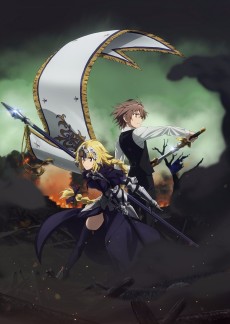 ANIME ActionFate/Apocrypha
ANIME ActionFate/Apocrypha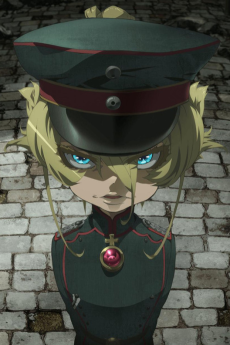 ANIME ActionYoujo Senki
ANIME ActionYoujo Senki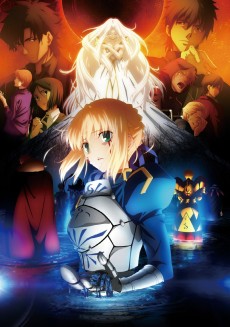 ANIME ActionFate/Zero 2nd Season
ANIME ActionFate/Zero 2nd Season ANIME ActionKekkai Sensen & BEYOND
ANIME ActionKekkai Sensen & BEYOND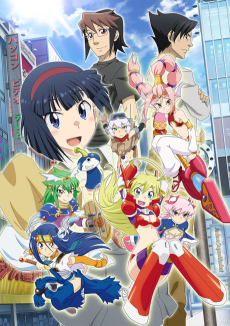 TV SHORT ComedyChou Kadou Girl 1/6
TV SHORT ComedyChou Kadou Girl 1/6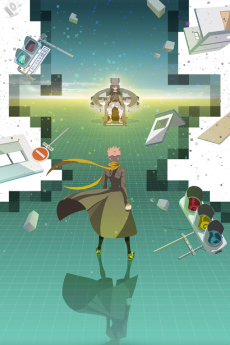 ANIME DramaID: INVADED
ANIME DramaID: INVADED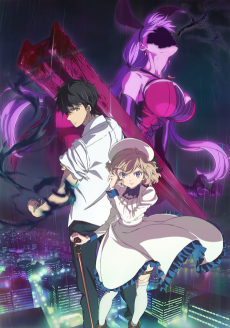 ANIME ComedyKyokou Suiri
ANIME ComedyKyokou Suiri
SCORE
- (3.65/5)
TRAILER
MORE INFO
Ended inSeptember 16, 2017
Main Studio TROYCA
Trending Level 2
Favorited by 2,184 Users
Hashtag #レクリエイターズ

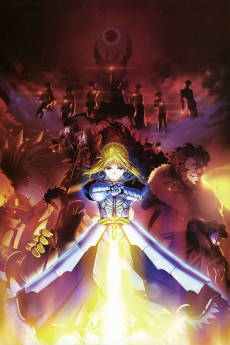
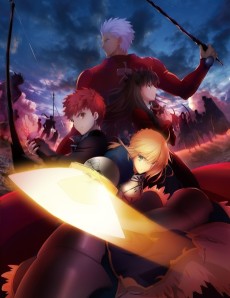
![Fate/stay night [Heaven's Feel] I. presage flower Cover Art for Fate/stay night [Heaven's Feel] I. presage flower](https://s4.anilist.co/file/anilistcdn/media/anime/cover/medium/bx20791-6Ktwmvm5v2Wf.png)
